{Garden 2022} Dealing with herbicides, tiny eggs, & braiding garlic
Do you want the good news or the bad news first? Let’s just get the bad out of the way first: My garden STILL has aminopyralid herbicide in the compost. ARGH! Rather than dig the poison compost out, we built up by adding lots of rotted wood, good compost, and layers of other mulch last fall. We let it sit all winter and then planted the mounds.
All was good, and everything looked amazing, until the roots got down to the poison. I can tell exactly where that is because the growth before they reached it was perfect, then as soon as they got to it, the tell-tell signs of twisted, curled leaves started showing in my tomatoes and beans. (We’re not eating any produce from these plants, and I will toss them in the yard debris bin instead of the compost.)
Here’s a healthy tomato. The new leaves are flat and open.

And here’s the herbicide damaged one. Notice how the leaves are twisted in on themselves.
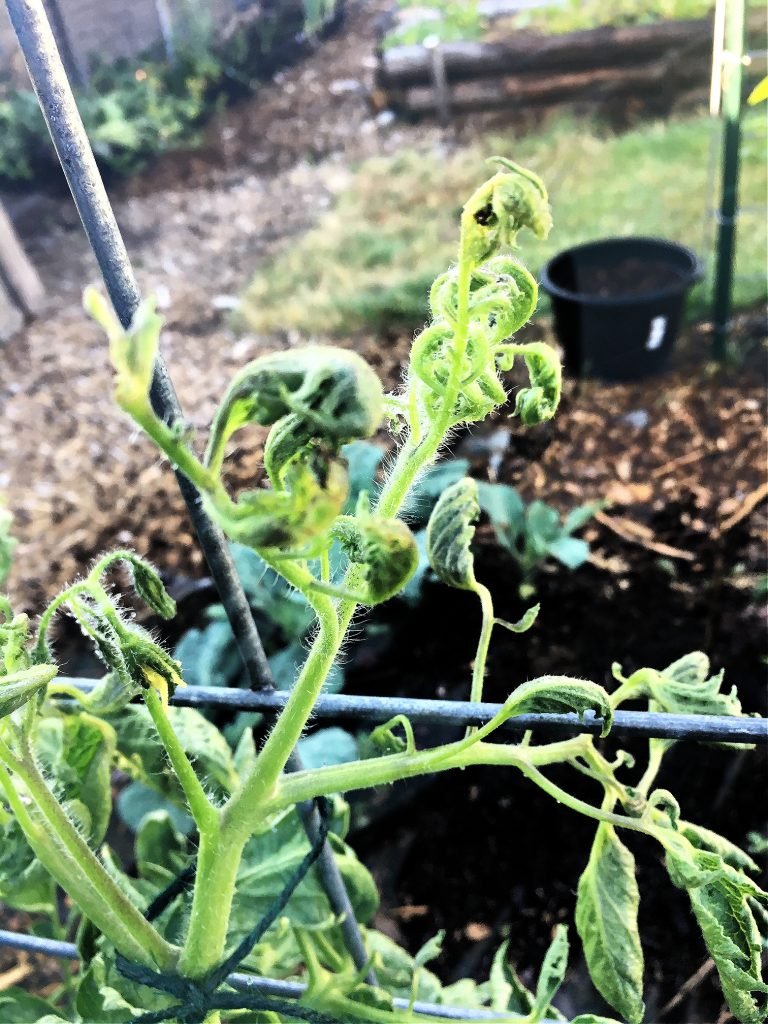
The crazy thing is these two tomato plants are right by each other. I know we didn’t get a heavy dose of compost with the herbicide residue, but there are still pockets of it in my garden. Here are the beans. The first is a healthy bean plant.
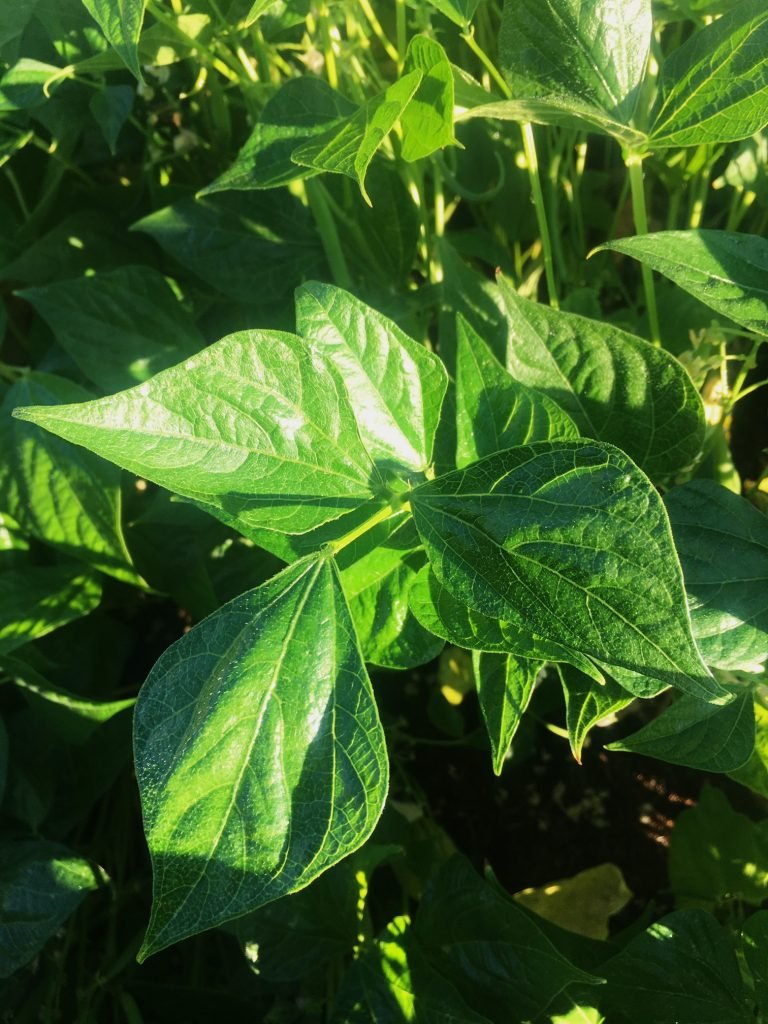
And here’s a poisoned one. Notice the darker, thicker, cupped leaves.
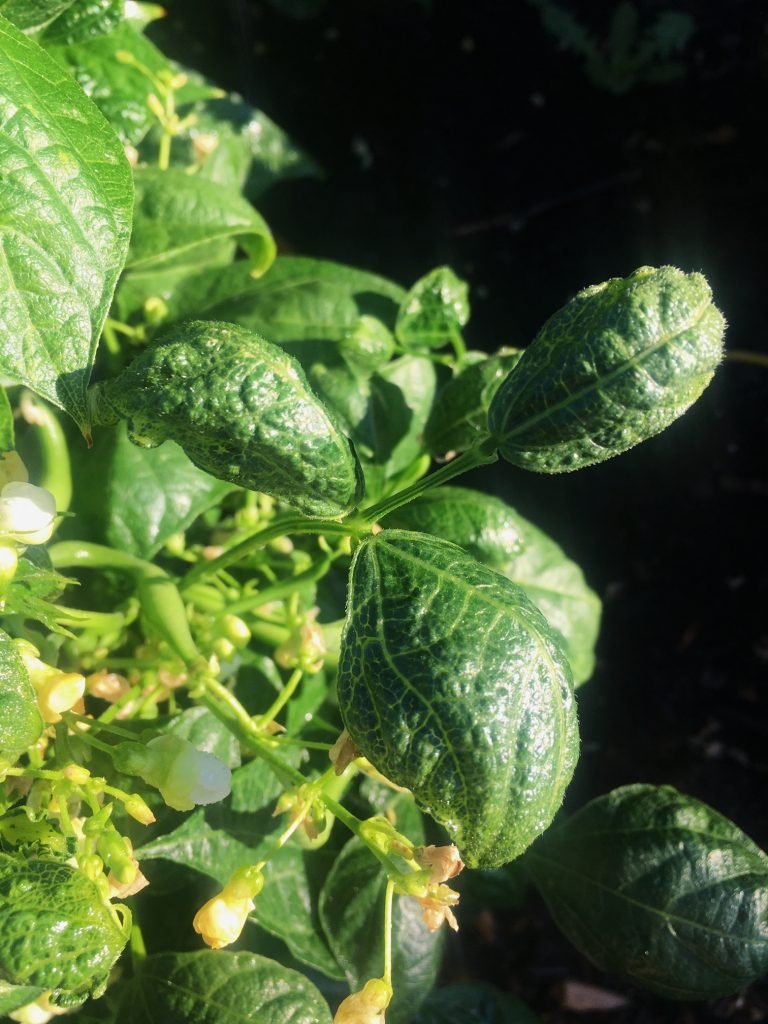
These beans are right next to the healthy ones, but in line with the poisoned tomatoes. So I’m going to measure and mark this area in the garden and put some sacrificial fall plants in there after these die off. I keep hearing the more roots in the ground, the quicker it will be removed. It’s just going to take time, roots, and microbes to remove it from the soil. Next spring I’ll move the tomatoes and beans to the other side of the garden and put some corn or wheat, which aren’t affected by this herbicide, here.
Please be careful with your compost and mulch and straw. I had no idea that this is all over the world, including my neck of the woods. Our tainted compost came from a horse boarding stable that we’ve gotten compost from before that had no issues. The problem is if one boarder brings in sprayed hay for their horse to eat, it comes out in the compost. The owners of the stable won’t have any idea what straw is sprayed or not, so it’s all very tricky. I’ve even heard it can be in store bought compost and soil blends. From now on, I’ll be testing anything I buy to spread on my garden by planting a bean seed in it first, and seeing if the first set of true leaves are twisted or not. Mainly, though, I’ll be using my own home made compost.
So that’s the bad news. The good news is most of the rest of the garden seems to be fine, other than the fact that we had a really long, wet, cold spring, and then instantly hot days. This made almost all of my cabbages and broccoli go directly to seed when I planted them. But a few of the savoy cabbages hung in there and are doing great, which is exciting, because this cabbage is more expensive in the grocery store than regular cabbage!
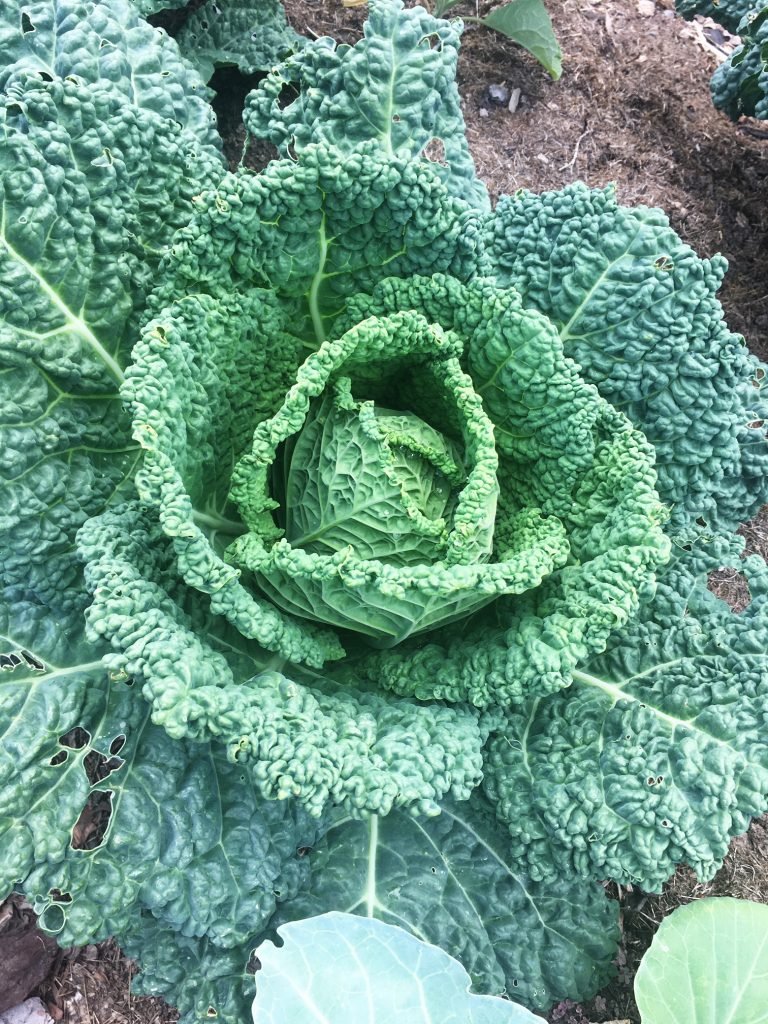
I’m trying a few new things this year, one of which is sweet potatoes. I’m not sure how they’re going to do in our climate here in the Pacific NW, but it was cheap and will be a fun experiment. (There is also a broccoli that ended up in that bed. I thought I’d leave it there and see how it goes. Neither plant seems to mind.
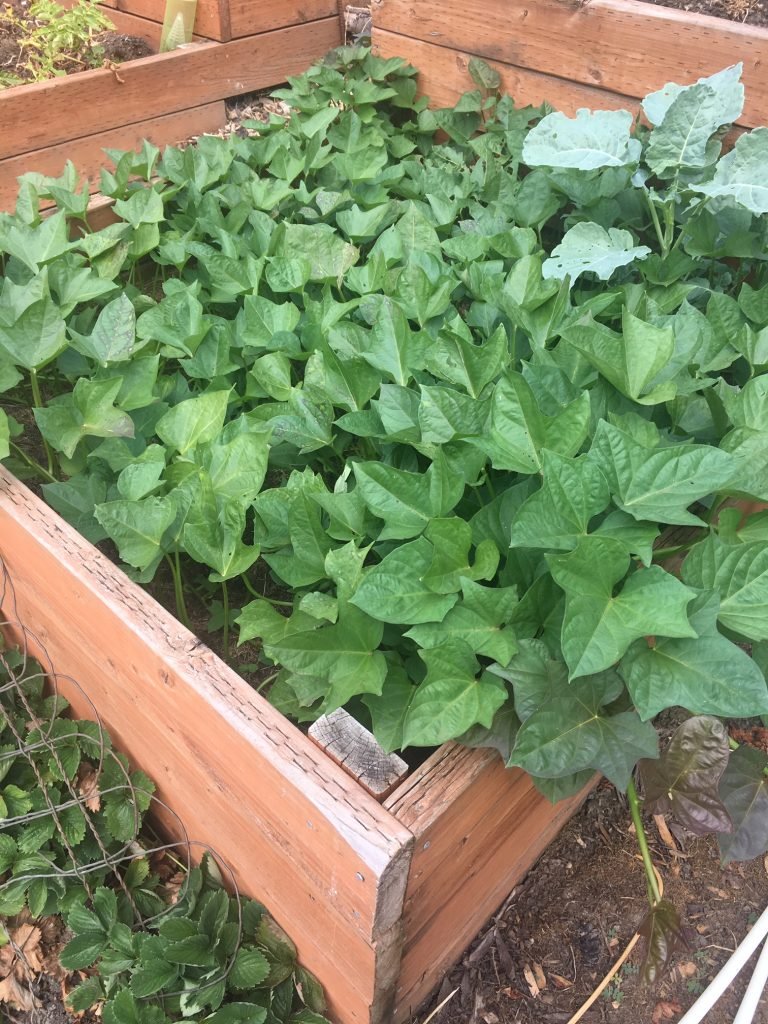
I also bought some yard long beans last year. I planted half the package of seeds, they got wiped out by the poison, so I planted the other half this year. They are really far behind but we still have a couple warm months left in the growing season. I’m just hoping they make it to the point where I can collect some beans to use as seed next year. It seems that home saved seed, when done right, really does germinate and grow better than store bought because it’s acclimated to our soil and growing conditions.

Speaking of home saved seed, I bought garlic online last year, and it did okay, but was a little disapointing. But last fall I planted the best cloves from those garlic bulbs and this year was an AMAZING crop of garlic! Some of the heads were as big as my palm! I saved the best of the best of these and will plant them in October for next year’s harvest.

I planted both hardneck (which gives you scapes, that we all loved) and softneck garlic. With the softneck I finally learned how to braid from this video (cool accent bonus points). They’re rough looking, but it worked! I will have garlic all fall and winter!
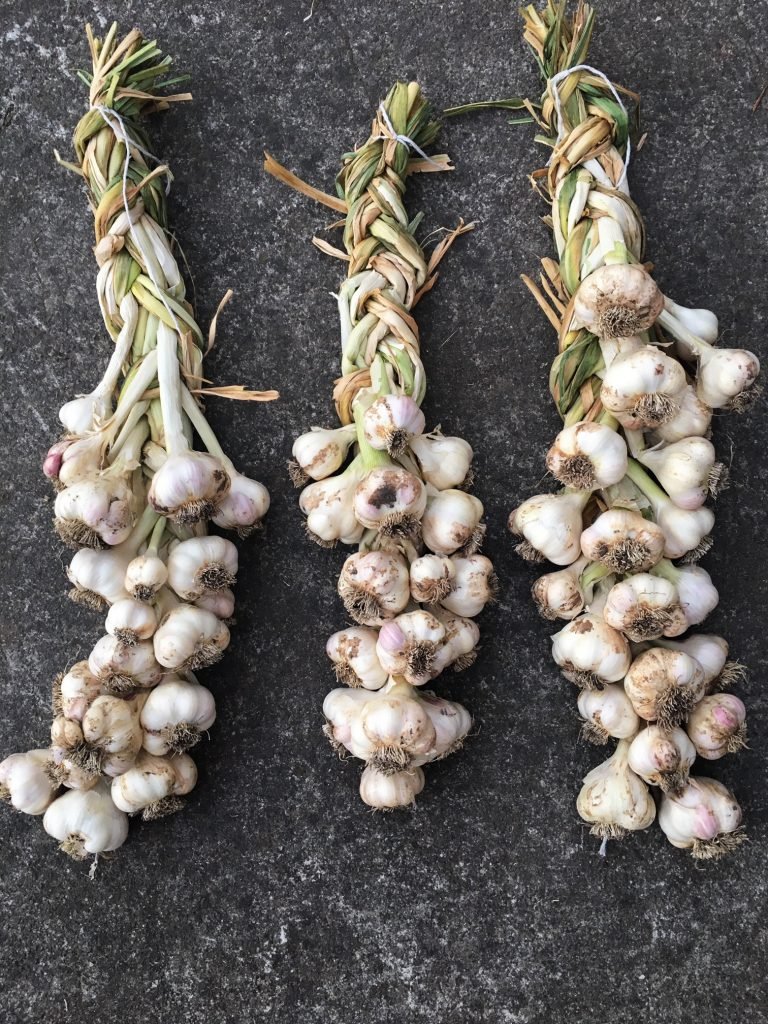
After I finished with the garlic, I laid down a thick layer of my homemade compost and then planted one more round of green beans in that bed.
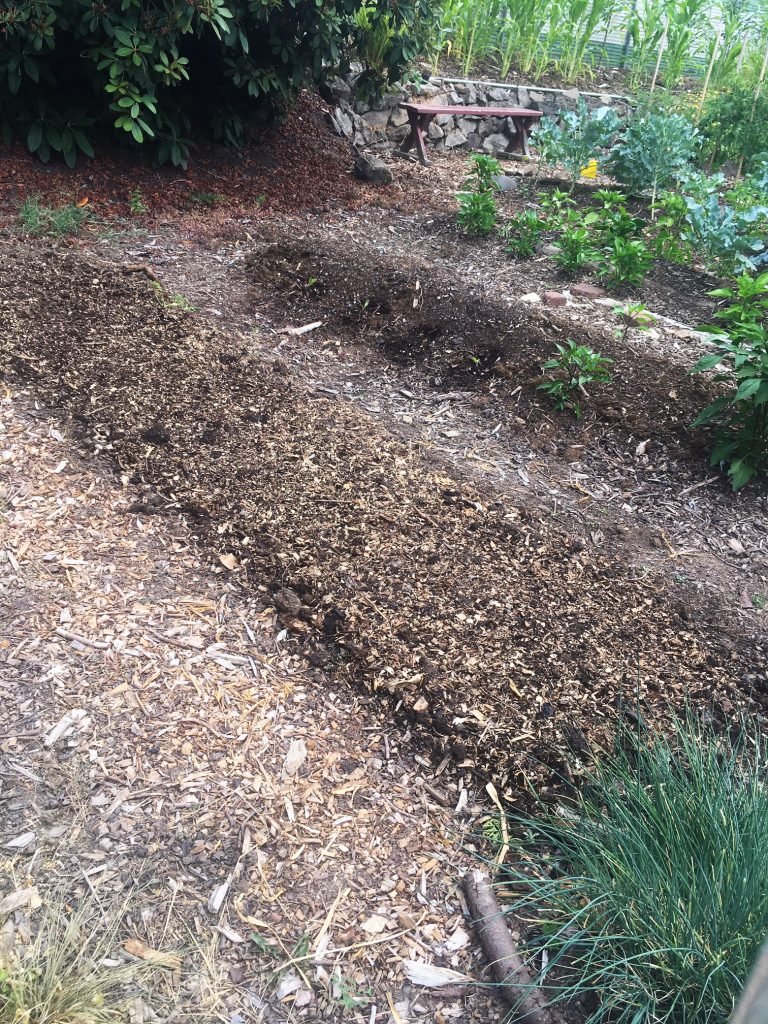
These will be Cherokee Wax and Royal Burgundy bush beans. I ordered them from this Etsy shop, that I’ve had a great experience with (I don’t have any sort of affiliation with them, just enjoy their product). All the packs of seeds I’ve gotten from them have had an excellent germination rate, plus it’s an heirloom, non-GMO, open pollinated seed store (which means the seeds aren’t hybrid or messed with, and if you replant the seeds, you’ll get that same product again the next year. Hybrids won’t do that.) The Golden Bantam corn in the background of the above photo is from them too. I’ve harvested six pounds of beans so far, with more plantings still coming on. These are Cherokee wax beans and French filet green beans.

I canned them up to add to my canning cupboard, which is starting to fill up!

Also, the little chickens we got this spring are finally starting to lay. The tiny eggs are adorable (this is a tiny egg next to a 2 year old hen’s egg).
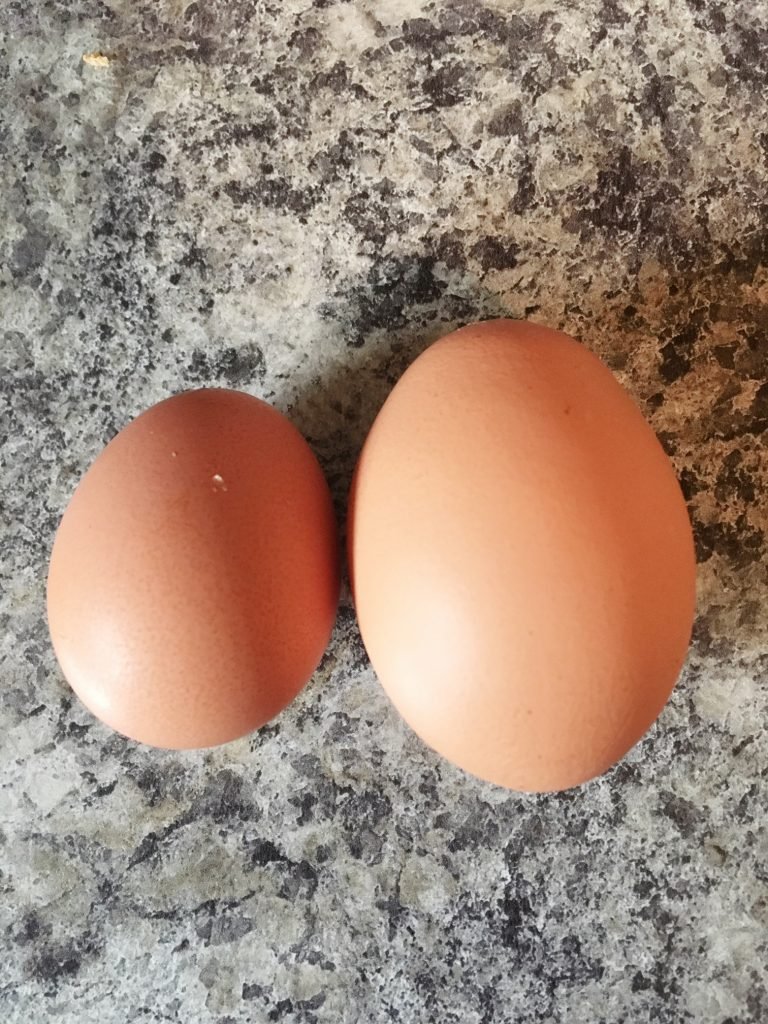
We’ve noticed that sometimes their first eggs also come decorated with a feather. One of the barred rock girls laid this one. It’s kind of a mess, but she’s brand new to this egg thing.
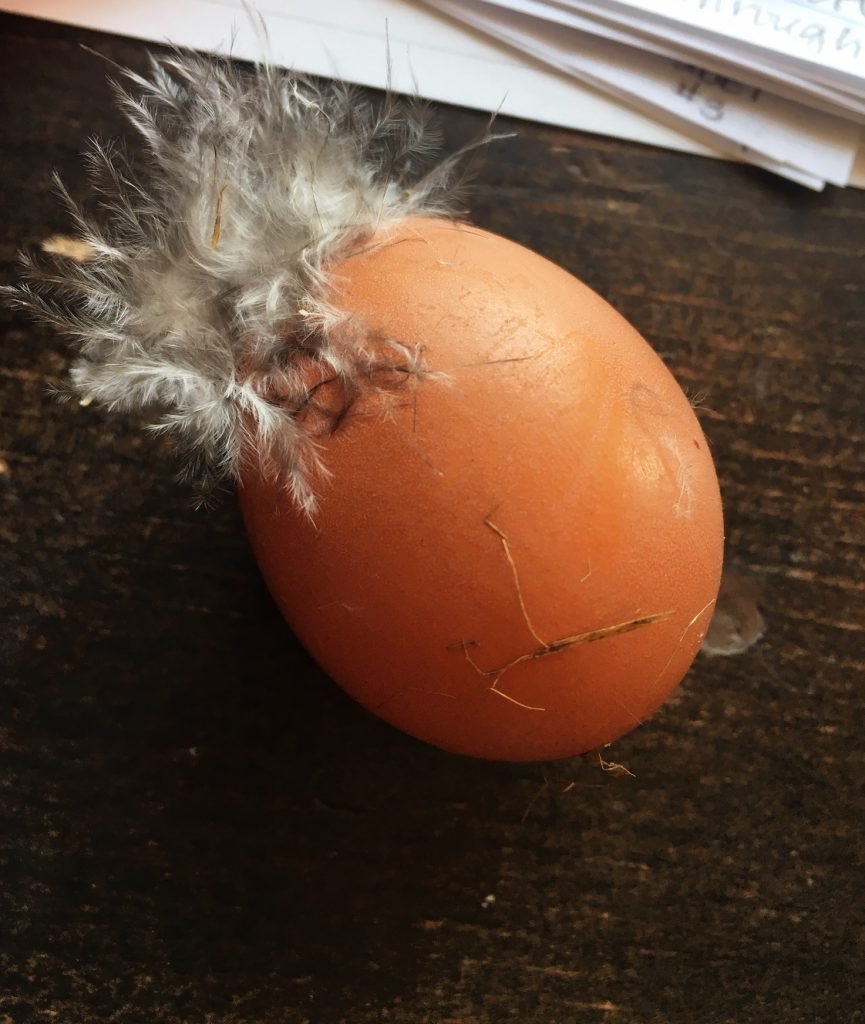
So that’s the garden update for the month of July. Total pounds harvested from the garden so far are below. (I’m not counting lettuce, but we’ve been enjoying that since spring. The season is over now because I’m letting the last of my favorites go to seed, so I’m planting more for fall.)
Oregon snow peas: 2.25 lbs
Burpeeanna shelling peas: 7 lbs
Russet Potatoes (from grocery store potatoes): 15 lbs
Spinach: 2 lbs
Garlic: 14 lbs
Green beans: 6 lbs
Summer squash: .75 (just harvested our first yellow squash… everything’s late!)
Total so far: 47 lbs





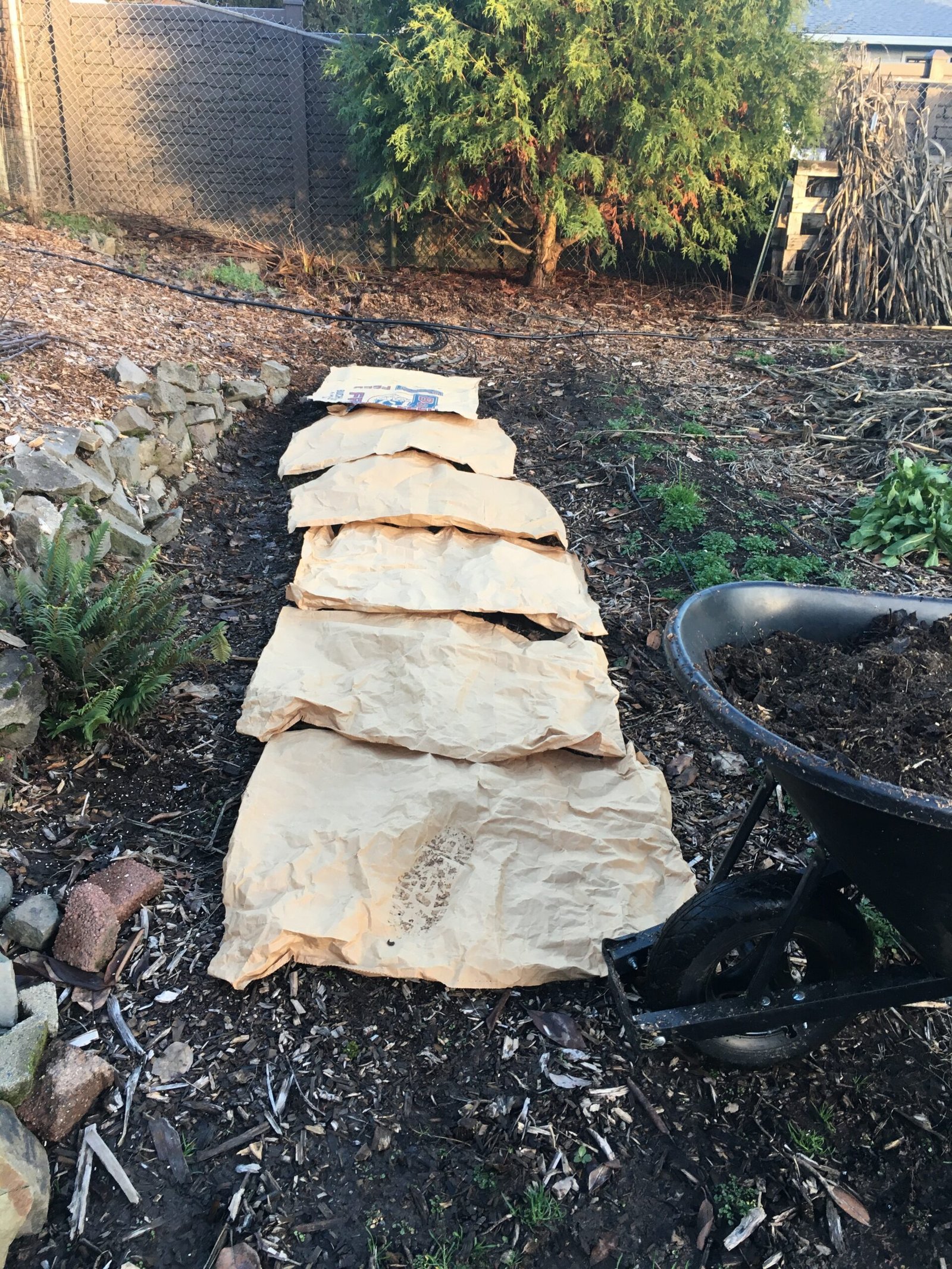
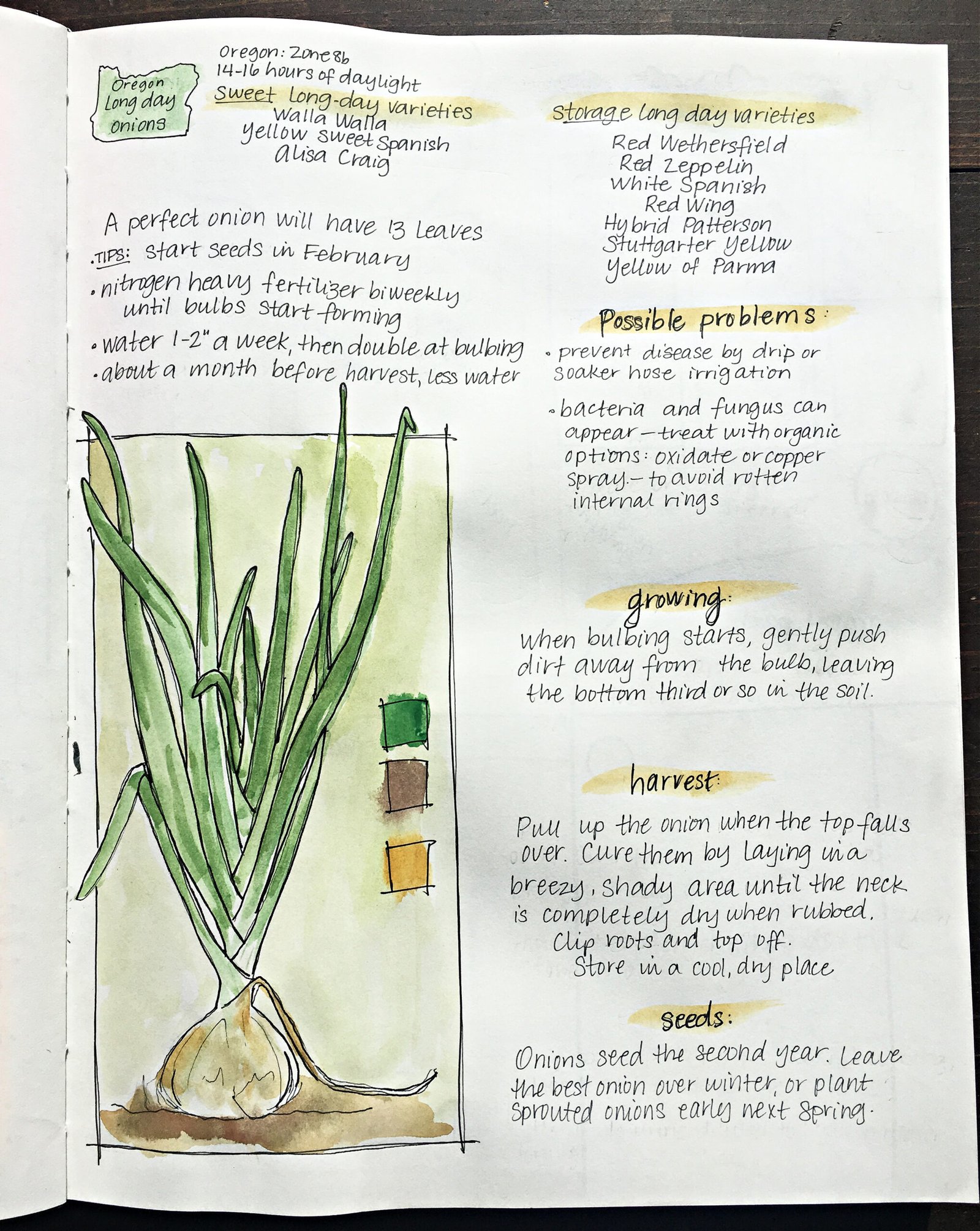
Could use some advice on seed saving! Please!
I’m still learning myself! My first stop on anything new is always the library. Check and see if your library has any of these books: https://howtosaveseeds.com/learn/seed-saving-books/
This is so much fun to read! Has me inspired, though since we are building, I didn’t do a garden here and not ready to do a garden there. The time will come. Of course, this year was an awful year to garden as its been hitting 100s since early June and very very little rain (really none, but that’s not quite true). Hoping next year is a more “normal” year.
it’s crazy how different each year is. Last year was amazing with broccoli, this year, we got less than a pound! So hoping next year is much better for us too!
One caution with collecting seeds is in the hard squashes. My parents tried that one year and ended up with some weird crosses between butternut squash and acorn squash. I think due to cross pollination.
I really like royal burgundy beans and recommend everyone try them. They’re so easy to see come harvest time.
I also learned this last year as I ended up with a very different lettuce from cross pollination. This year I’m keeping everything well separated to see if that helps.
Our garden is also still seeing the results of the “poisoned poop” – but we shall overcome! (One variety of cucumbers is bright orange – not supposed to be that way 🙂 ) Our strawberry plants all survived, so I’m happy!
UGGGHHHH! I’m so sorry! What a big ugly mess this all was. Did you do anything to try to mitigate it? All those shovelfuls of poop, for this. Grrrr…